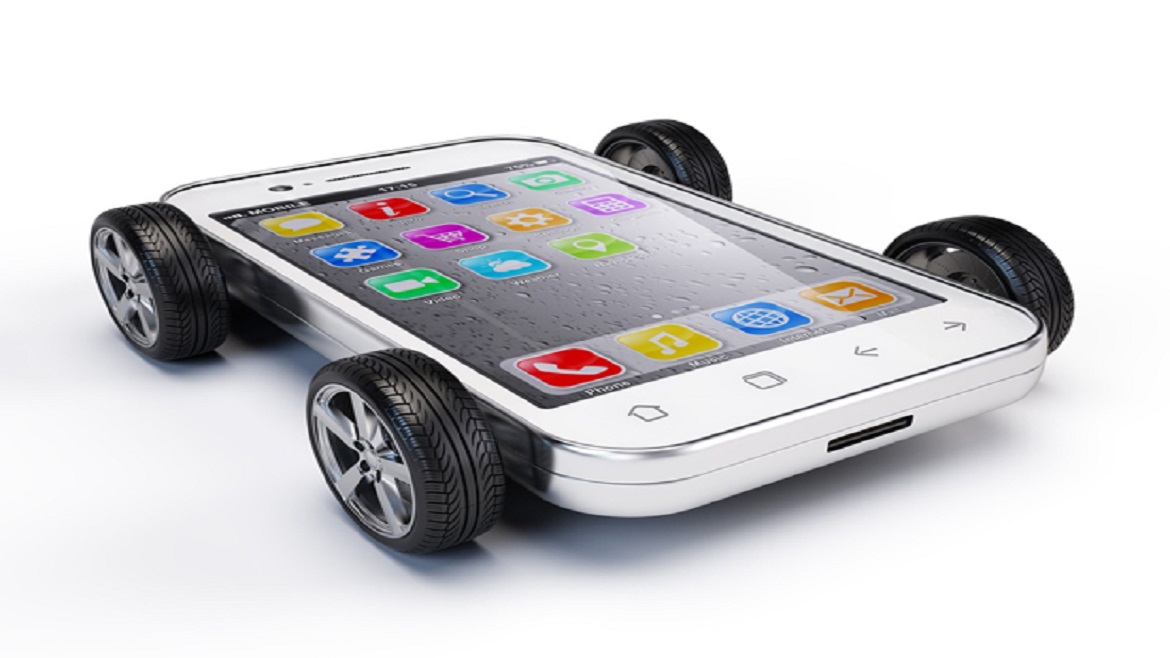Beyond controlling how vehicles perform and handle, electronic systems are allowing us to do more while driving: to make calls and select our favourite tracks without taking our eyes from the road, and to drive to almost any location without knowing how to get there.
Stepping up what these on-board computers can do is a serious business for car manufacturers. Drivers will soon expect new cars to run a suite of in-car apps as standard. But car makers are also chasing a slice of what could end up as a very large pie if demand for in-car apps grows as rapidly as the market for smartphone software, which exploded after the launch of the Apple iPhone in 2007.
To recreate that demand in-car auto makers have teamed up with the companies that dominate the multi-billion dollar smartphone app market. Audi, GM, Honda and Hyundai, have partnered with Google to form the Open Automotive Alliance and bring the Android phone operating system (OS) and apps to their cars, while even more car manufacturers are working with Apple to forge closer links between their vehicles and iOS, the software platform that powers the iPhone and iPad.
These partnerships don't mean the in-car dash will look or feel exactly like a smartphone, and a number of car makers are also building their own OS for their vehicles. But it makes sense for in-car OS to borrow elements of the design and functionality from these tried and tested platforms. And as mobile apps become integral to how we interact with family, friends and colleagues, drivers will expect in-car systems to pull details from their Android contacts book or let them bark commands at Apple's digital assistant Siri.
Most major car makers are partnering with at least one tech firm on in-car OS, but they do seem to be spreading their bets. Several manufacturers are signed up to both Apple's and Google's initiatives, as well as other schemes like the GENIVI Alliance, while Ford worked with Microsoft on its Sync system. Ford has been refining the in-car Sync voice control system since 2007, and its experience should both encourage and forewarn these newer in-car OS partnerships. Almost four out of five new cars and trucks sold by Ford in the first half of 2013 included Sync or MyFord Touch, which bumped up the automaker's profit margins. But the complexities of the Sync and MyFord Touch systems have also been blamed for increasing the number of complaints about Ford vehicles.
Looking further into the future in-car computers could move from helping humans behind the wheel to driving cars themselves. Google's prototype self-driving car has clocked up more than 300,000 miles and car makers Nissan and General Motors both plan to release self-driving cars by 2020.
Long term, self-driving cars could help affect a shift from vehicle ownership to rental, particularly in urban areas. More people could afford to be chauffeured without the need to pay someone to drive them. But beyond removing labour costs, the price of hiring these self-driving vehicles could be offset by new business models: by advertisers paying car rental companies for data on where and when people travelled to build richer customer profiles; through bricks-and-mortar businesses subsidising journeys to their premises and by travellers splitting costs with others through ridesharing services like Uber. If the cost of hiring autonomous vehicles falls far enough, then paying per journey may seem preferable to the expense and hassle of owning and maintaining a car, self-driving or otherwise. What started with a mission to bring apps to the car will likely lead to a complete re-envisioning of the way we drive.
This blog is part of a series managed by the Economist Intelligence Unit for HSBC Commercial Banking. Visit HSBC Global Connections for more insight on international business.
The views and opinions expressed in this article are those of the authors and do not necessarily reflect the views of The Economist Intelligence Unit Limited (EIU) or any other member of The Economist Group. The Economist Group (including the EIU) cannot accept any responsibility or liability for reliance by any person on this article or any of the information, opinions or conclusions set out in the article.




